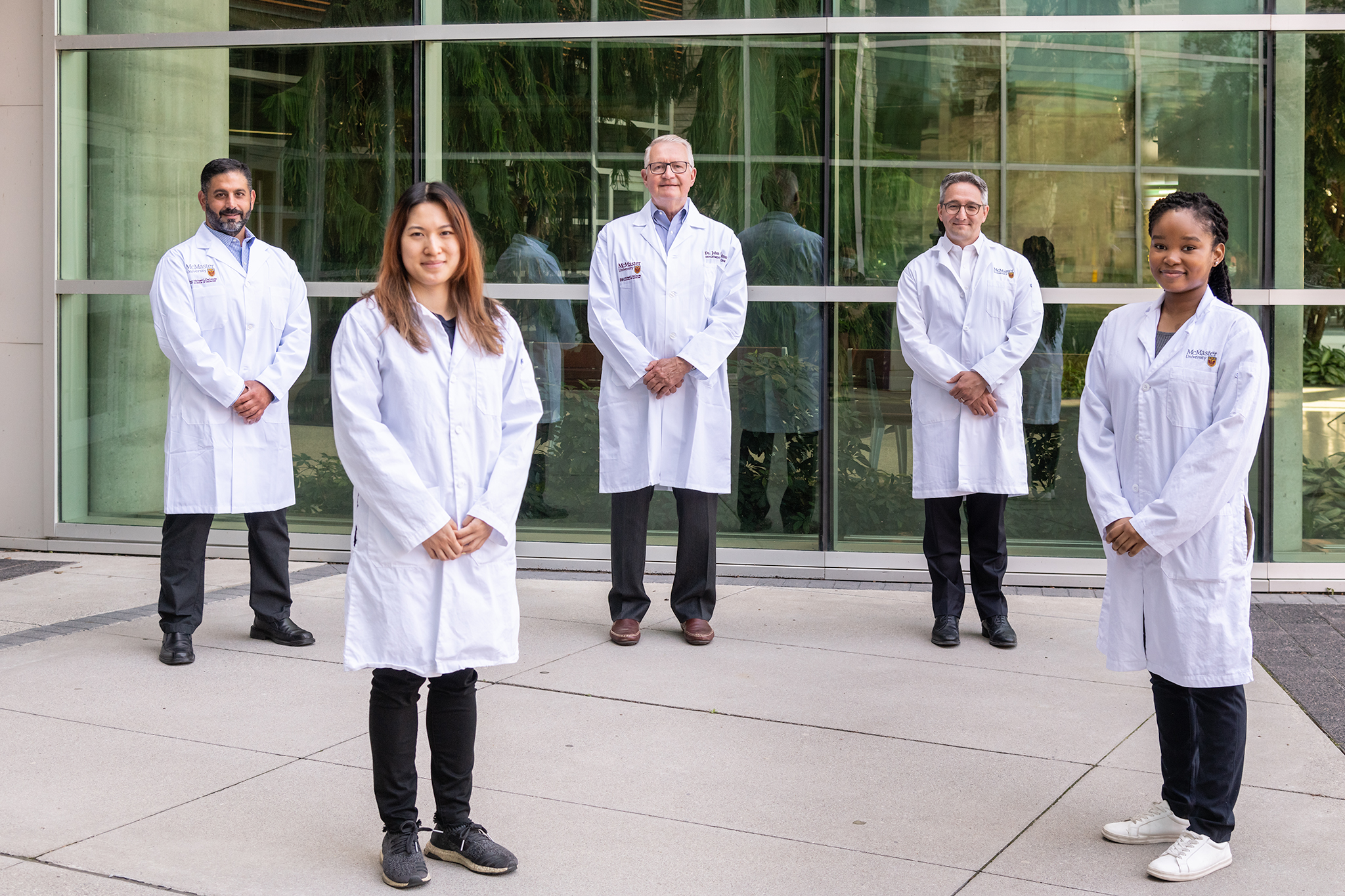Antibody Epitopes in Vaccine-Induced Immune Thrombotic Thrombocytopenia

Published in Nature
Reference: Huynh A, Kelton JG, Arnold DM, Daka M, Nazy I. Antibody epitopes in vaccine-induced immune thrombotic thrombocytopenia. Nature 2021
Link to full article: https://www.nature.com/articles/s41586-021-03744-4
What is the issue?
Vaccine-induced immune thrombotic thrombocytopenia (VITT) is a rare but serious adverse effect of adenoviral vector vaccines against SAR-CoV-2 virus (COVID19), characterized by both a drop in the platelet count (thrombocytopenia) and clotting (thrombosis). The clots often occur in unusual locations including the brain, and in arteries and veins throughout the body. At first, the clotting was thought to occur mostly in young women, we now know that both females and males of any age can be affected. In many respects, VITT is similar to a syndrome called heparin-induced thrombocytopenia (HIT), which our research group has studied for many years. VITT and HIT are similar because they both cause the combination of low platelets and severe clotting, and they are both caused by an unusual antibody (a natural defense in the body) against a specific protein called platelet factor 4 (PF4) which is found inside platelets. However, there is one very important distinction. HIT occurs after heparin exposure, while VITT occurs after the adenoviral vector vaccines.
What did we find?
The study was done in three parts. In the first part, we determined how platelets became activated by antibodies from patients who had VITT. We studied blood samples from five patients with VITT and compared them with blood samples of ten patients with heparin-induced thrombocytopenia (HIT), and ten samples from healthy individuals using techniques we developed at the McMaster Platelet Immunology Laboratory. We found that VITT blood samples cause patterns of platelet activation that were distinct from heparin-induced thrombocytopenia. This allowed us to “fingerprint” the reactions from VITT. This also indicated that the confirmatory test used for HIT is not suitable to diagnose VITT that modifications to the tradition platelet activation test was necessary.
In the second part of the study, we used a molecular mapping technique called alanine scanning mutagenesis to study the individual components (amino acids) of the interaction between the VITT antibodies and PF4 protein. We produced a large number of PF4 subtypes called ‘mutants’. By testing these mutants in different combinations, we were able to find the precise location on the PF4 where the protein VITT antibodies bound. In fact, the VITT target was narrowed down to eight specific amino acids on PF4, and these eight amino acids were identical to the binding site of heparin. Essentially, this means that VITT antibodies bind to PF4, which activates platelet and other clotting factors causing the severe clotting disorder which characterizes the syndrome. Using computer techniques, we were able to show the molecular (crystal) structure of the target for VITT antibodies on the PF4 protein and compare this target with heparin-induced thrombocytopenia (HIT) antibodies.
The third part of the study focused on understanding how strong the VITT antibodies were. We used a technique called biolayer interferometry (BLI) to determine how tightly the VITT antibodies bound to the target on PF4. We found that the VITT antibodies were very unusual because they bound very tightly to PF4, more tightly than HIT antibodies.
What does this study mean?
Our study explains why VITT causes such a serious clotting disorder. Very rarely, after receiving the COVID-19 adenoviral vector vaccines, some individuals will produce extremely unusual antibodies that can bind tightly to a specific site on the naturally occurring platelet factor 4 (PF4) protein. The location of binding and the strength of binding allow the antibodies to cluster PF4 proteins together forming immune complexes that can, activate platelets and trigger an intense clotting reaction throughout the body. We do not know why these rare antibodies form in the first place, and we do not know why they cause blood clots in unusual places; but we do know the specific target of the VITT antibody. This information will help us develop better tests so that doctors can rapidly spot patients with VITT. And by understanding out how these reactions can be avoided, we believe that safer vaccines can be developed.
Platelet Immunology